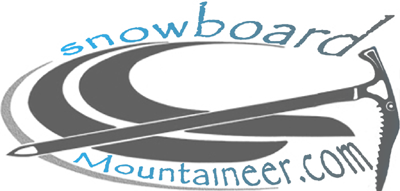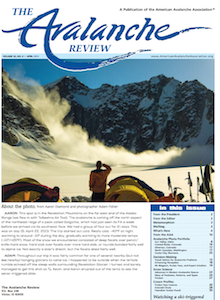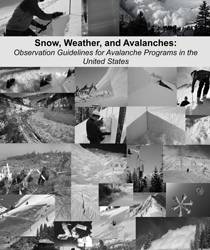Avalanche: Get the Training
Avalanche Education
The best way to stay safe in the backcountry is through education. Understanding terrain, weather, snowpack and how to avoid avalanches is your ticket to a long life of backcountry enjoyment. Pursue avalanche education as vigorously as you pursue your passion for the backcountry.
There are many opportunities to advance avalanche education through local avalanche centers, and courses standardized through the American Avalanche Association (AAA). The AAA sets the guidelines and framework for providers, and organizations such as American Institute for Avalanche Research and Education (AIARE), and American Avalanche Institute (AAI) provide the curriculum according to the AAA standards. The National Avalanche Center also has abundant resources.
The National Avalanche Center has many educational resources including articles, scenarios, and videos. fsavalanche.org
 There are three levels in the AIARE program:
There are three levels in the AIARE program:
- The AIARE 1 course is an introduction and review of the avalanche phenomena, travel techniques, decision making strategies, and avalanche rescue.
- The AIARE 2 course provides technical and scientific information that improves participants’ understanding of how and why avalanches occur, covers the factors that indicate and affect snow stability, and introduces the snow stability analysis and forecasting process.
- The AIARE 3 course incorporates snow stability analysis and forecasting, avalanche hazard analysis and forecasting, and activity/operational planning in a high level decision making framework.
A full list of AIARE course providers more… avtraining.org
Mountaineering safety
 Traveling in more extreme mountain environments means you will need to acquire the necessary skills. In Colorado, the Colorado Mountain Club (CMC) has courses in Basic Mountaineering Skills (BMS) and Advanced Mountaineering Skills (AMS). You can also take courses through Colorado Mountain School (CMS) that touch on all the basic skills. Traveling in alpine environments rope and climbing fundamentals, proper use of an ice axe such as self arrest techniques, and so on. These basics will make your outings more enjoyable, and you more successful as a backcountry enthusiast.
Traveling in more extreme mountain environments means you will need to acquire the necessary skills. In Colorado, the Colorado Mountain Club (CMC) has courses in Basic Mountaineering Skills (BMS) and Advanced Mountaineering Skills (AMS). You can also take courses through Colorado Mountain School (CMS) that touch on all the basic skills. Traveling in alpine environments rope and climbing fundamentals, proper use of an ice axe such as self arrest techniques, and so on. These basics will make your outings more enjoyable, and you more successful as a backcountry enthusiast.
Medical
Overview | Gear | Forecast | Training | Get the Picture



